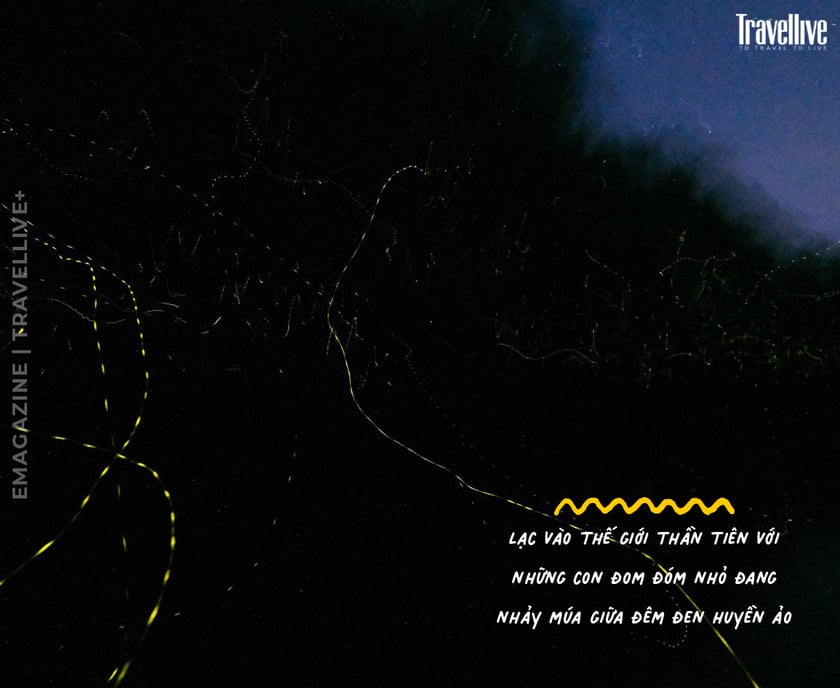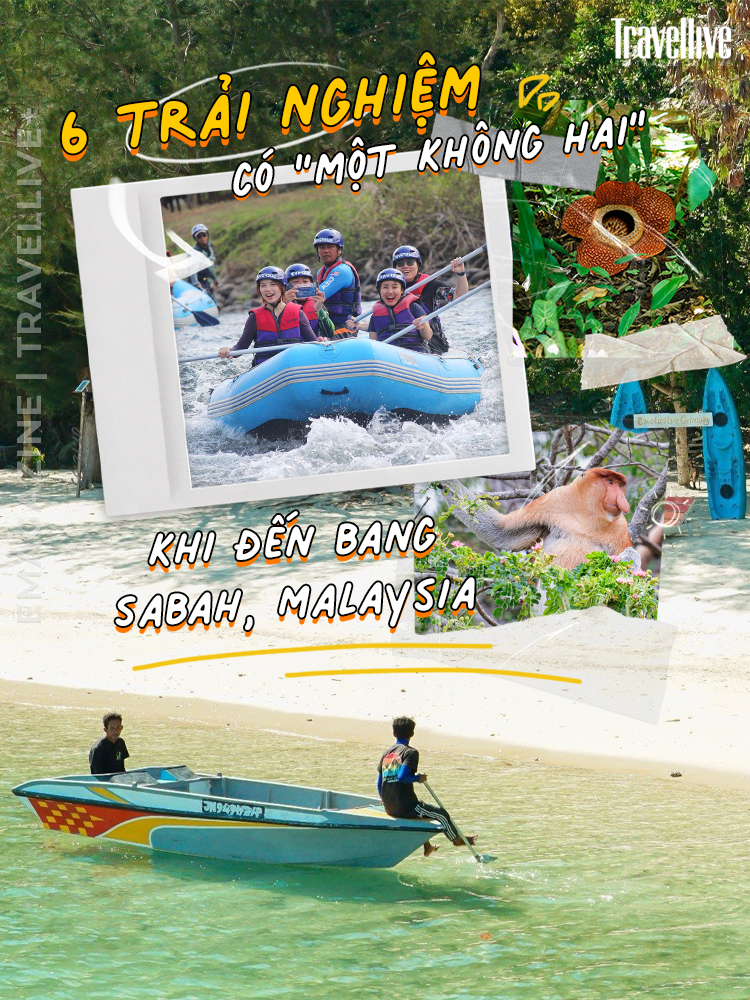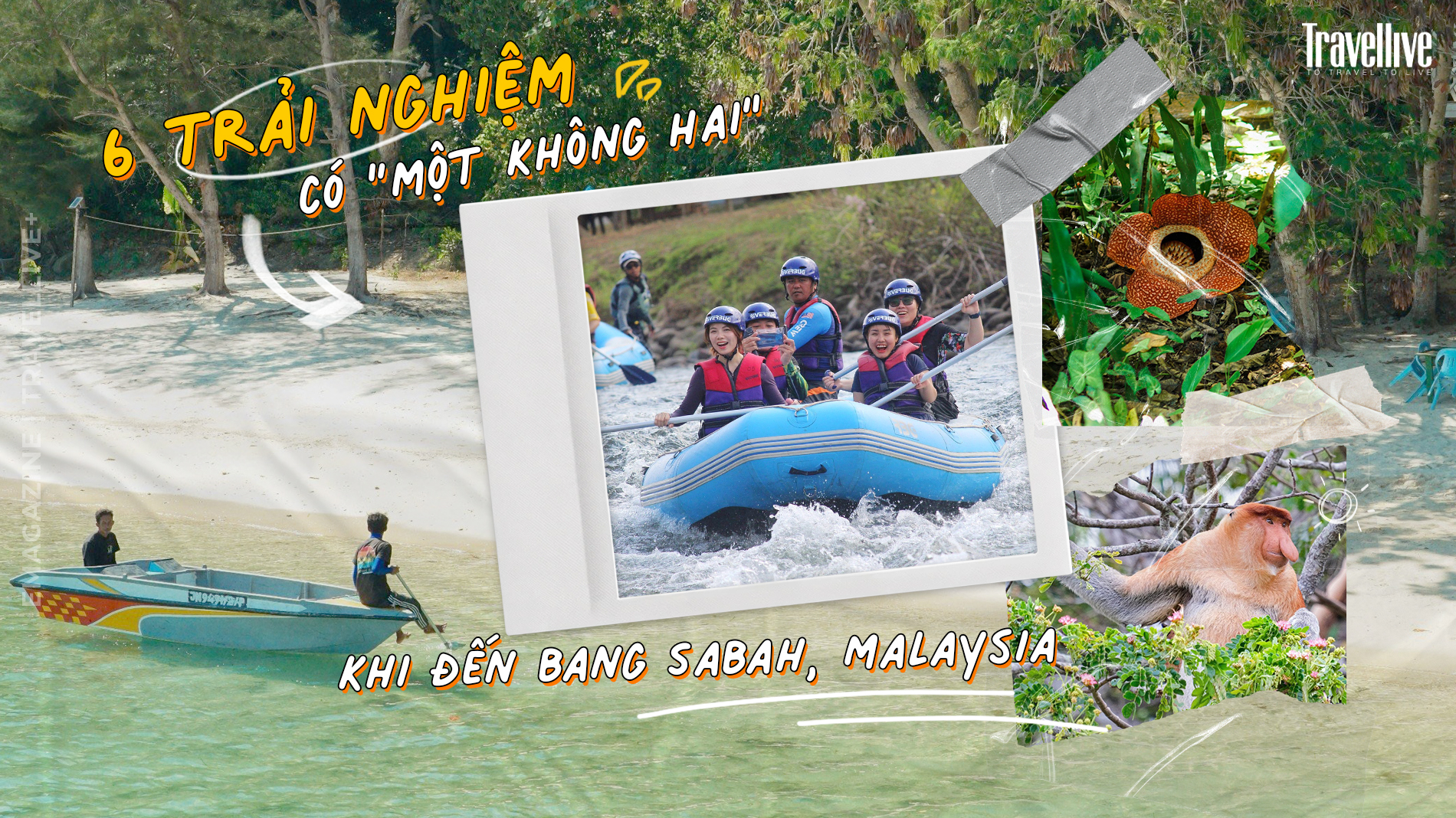Walking under the sea in Sepanggar Island, immersing yourself in the culture of the tribes at Mari Mari Cultural Village, going to Borneo Island to see the long-nosed monkey, getting a fish massage in Tagal Luanti, seeing giant flowers, crossing Kiulu Falls... are all fascinating experiences when setting foot in the "land under the winds" in Sabah State, Malaysia.
Known as the “land beneath the winds”, Sabah, Malaysia lies below the East Asian typhoon belt with temperate weather and is ideal for a tropical holiday. Sabah is blessed with a diverse ecosystem, a unique culture with over 30 indigenous ethnic groups, beautiful beaches and diverse cuisine.
Let's follow Travellive reporters to experience things not to be missed when coming to Sabah state, Malaysia!
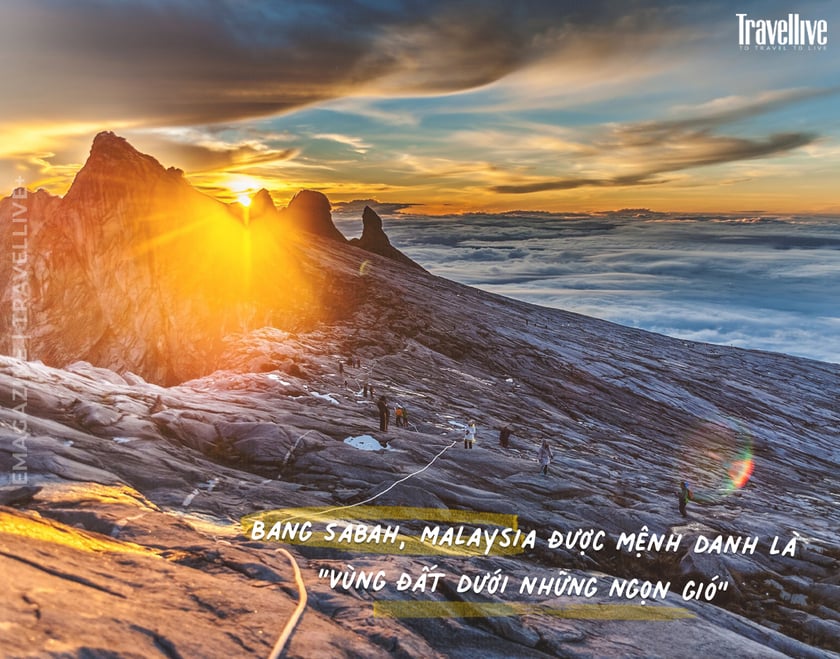

More than 120 km from Kota Kinabalu, Tagal Luanti is located on the Ranau plateau, where the Moroli River flows through. This riverbank is where the fish massage service takes place, operating since 2007. Unlike the fish massage in other tourist destinations in the world by putting your feet in a soaking pool, here visitors will directly wade into the river to let thousands of fish surround and nibble at their feet.
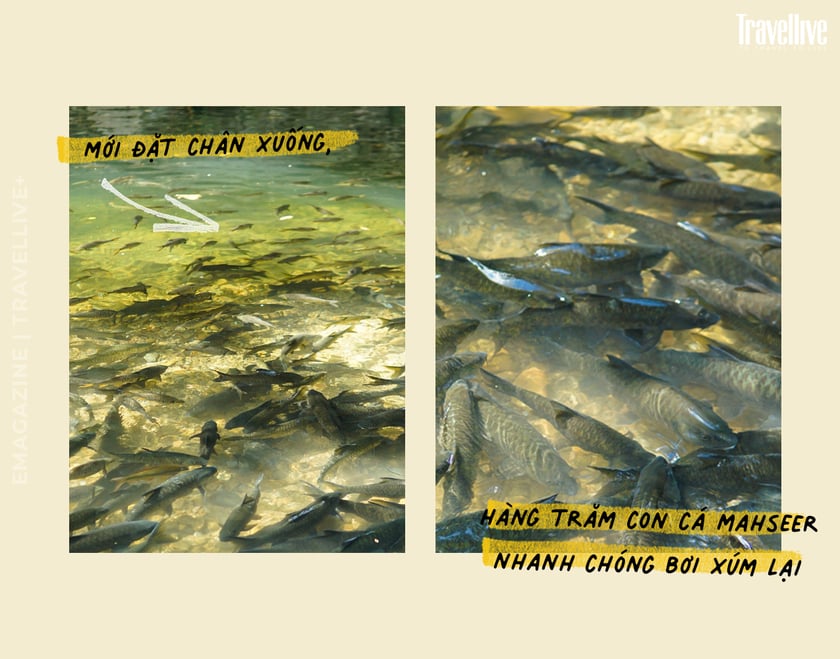
The massage fish in the Moroli River are mahseer carp, native to Southeast Asia. These small fish, only about 2-4 cm long, have the ability to remove dead skin and stimulate blood circulation. It may be a little ticklish at first, but most people find the experience very enjoyable and immediately relaxing.
The Moroli River that flows through Tagal Luanti is not too deep, enough for visitors to wade comfortably. Some deep sections are roped off to limit visitors from stepping into the water. Visitors are also required to remove their shoes before entering the water.


The crystal clear waters on the long white sand beach, diverse marine life, the brilliant natural picture of the ocean and many water sports experiences are what attract tourists to Sepanggar Island. With only 20 minutes by boat from the center of Kota Kinabalu city, visitors can easily set foot on this island to experience many interesting things.
Sea walking is a popular tourist activity in Sepanggar Island, Malaysia. Visitors will be equipped with a helmet with a 35 kg breathing tank, walk along the seabed at a depth of about 10 m and see the coral reefs and colorful marine life. In addition, visitors will also be provided with shoes to protect themselves from dangerous sea creatures.
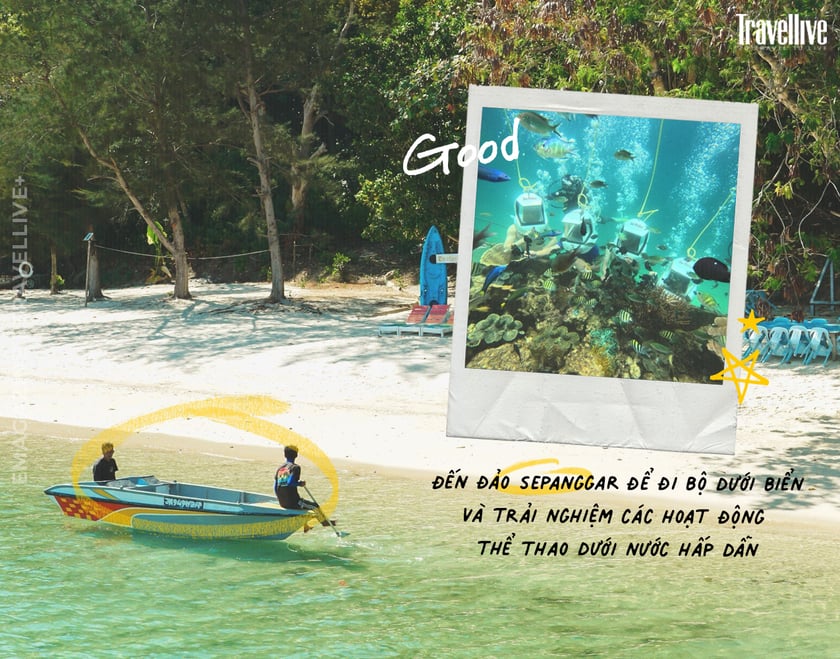
The duration of this experience is about 20 - 30 minutes. During the journey, the tour guide will take photos and videos to capture this moment and lead you along the seabed to see and touch many colorful marine creatures. The water around Sepanggar Island is very clear and blue, making it an ideal place for swimming and diving.
In addition to sea walking, tourists can also trek through the rainforest, ride a jet ski, camp, and kayak along the coast to enjoy panoramic views of the island and surrounding waters.

White water rafting in Kiulu is a great way to see Malaysia's majestic natural beauty in full view and experience the thrill, adventure and thrill.
The Kiulu River is about 50 km long, flowing through tropical forests and hills. On the river there are many rapids with different levels of difficulty, from level 1 to level 5, suitable for beginners and professional paddlers.

At first, many people will think that rowing rubber boats through rapids on the Kiulu River is a strong feeling, but in fact, this sport is very safe and gentle. Visitors will experience rowing through a 7 km long river in about 2 and a half hours. During that rowing time, you can stop to admire the scenery, swim, overcome the rapids, bringing a feeling of suspense but full of adventure.

To see this unique flower in Sabah state, visitors can go to the Kokob Rafflesia private conservation garden in Ranau plateau, about 120 km from the center of Kota Kinabalu city, Malaysia.

Rafflesia flower, also known as corpse flower, is a special parasitic plant found in the tropical forests of Indonesia and Malaysia. This flower is famous for its giant size and characteristic stench, with a diameter of up to 1.2 m and a weight of about 10 kg. Rafflesia flower has no leaves and no stem. Due to its giant size and unique appearance, Rafflesia is known as the "king of flowers".
There are about 30 species of Rafflesia in the world. Sabah, Malaysia is home to the largest number of Rafflesia with 9 recorded species. The life cycle from bud to full bloom ranges from 7 to 13 months and it only takes 5 days to wither. From the first to the fourth day, there will be no smell, but from the fifth day onwards, a foul smell will be emitted and then gradually decay to attract insects and inadvertently help them pollinate. After that, the flower will wither to start a new cycle.
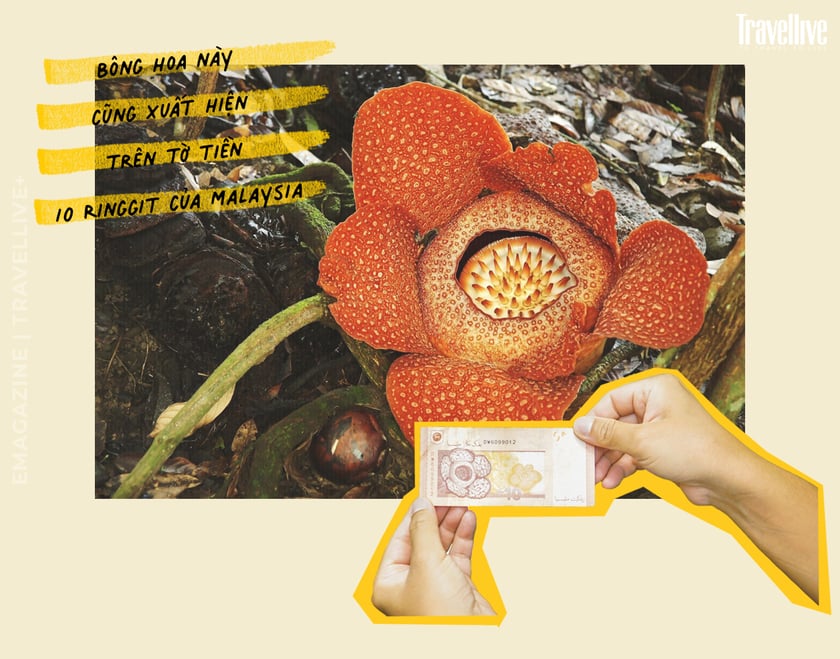
Rafflesia, with its strange and unique beauty, is a rare flower that any tourist coming to Sabah, Malaysia would like to admire once. This flower also appears on the Malaysian 10 Ringgit note. Although it blooms for a short time, Rafflesia brings an impressive and surprising experience, evoking people's passion for exploring wild nature.

Mari Mari Cultural Village is located in a remote forest in Kiosom, about 20 km from Kota Kinabalu city, Sabah state, Malaysia. This place attracts many tourists from all over the world to explore because of the reenactment of the life and customs of the indigenous tribes of Borneo including: Murut, Bajau, Lundayeh, Rungus and Dusun. In particular, the Murut tribe is famous for its headhunting.

One of the most attractive points of Mari Mari cultural village that attracts tourists is the reenactment of the daily life and culture of the tribes. Tourists can visit traditional long houses, cultural performances and learn how to make fire, brew rice wine, enjoy typical culinary specialties, make handicrafts... The indigenous people here are very friendly, open, and willing to share their culture and traditions with tourists.


Floating on the Kawa Kawa River in Malaysia, visitors can admire the world's longest-nosed monkey in the river area with long-stretched mangrove forests. Known as an endemic animal of Borneo Island (the third largest island in the world, divided into three countries: Indonesia, Brunei, Malaysia), the proboscis monkey or long-nosed monkey is one of the most special primates in the world.

The proboscis monkey has a large, long, drooping nose and a large belly. They live in groups in mangrove forests, including the area around the Kawa Kawa River in Malaysia. This is considered one of the largest monkey species in Asia. Males weigh 16-35 kg, while females are significantly smaller than males. Thanks to this "huge" nose, the proboscis monkey can make sounds that can be heard from dozens of kilometers away. The long nose is the point that helps males attract mates during the breeding season.
To see the proboscis monkeys, visitors can take a boat trip along the Kawa Kawa River, about 70 km from Kota Kinabalu. To take photos of the animals from high branches, visitors must prepare a camera with a large focal length lens.
At each section of the river, when detecting monkeys, the boatman will slow down and stop close to the shore for about 15 minutes to let tourists watch and record the moment. Note, tourists should not be too noisy because it will scare the monkeys away. Along the banks of the Kawa Kawa River, in addition to long-nosed monkeys, tourists can also freely watch other wild animals.
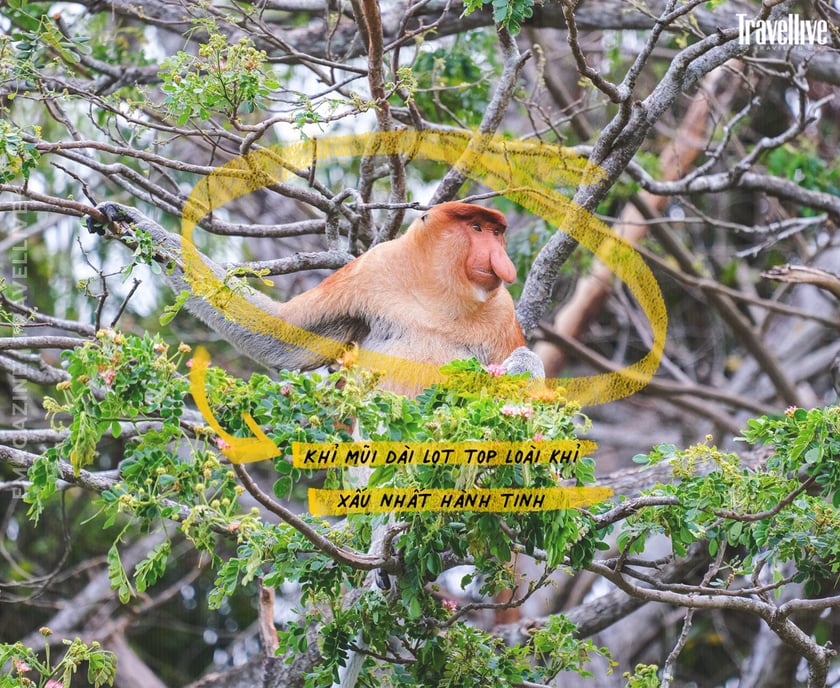
When night falls, visitors can travel to the Nanamon River to watch fireflies. In the quiet dark night, a boat will take visitors to look for fireflies floating on the Nanamon River. Tens of thousands of fireflies like sparkling stars are covered along the riverbank. The boatman will use a small lamp with a soft orange light to attract fireflies. Each spot of light moves with the light, creating a shimmering, magical scene.
